A big day out in London’s indoor public space
Seven places where you can sit down inside for free
Hello and welcome to Wooden City, a newsletter about London.
If you haven’t come here via @caffs_not_cafes, I'm a writer called Isaac Rangaswami and this is my Substack.
Every other week I publish an article about everyday places in London with unusual staying power, like shops, buildings, restaurants and public spaces.
In case you missed it, here’s the previous issue on marketplace food stalls.
It’s your lunch break and you have a tupperware container of leftovers to eat. You feel like going out, but it’s too cold and wet to sit in the open air. So where do you go?
You’re meeting a friend in town later and you’re already out and about, so you have some time to kill before they arrive. You don’t want to buy a pint or a panini, just for the sake of a seat. So where do you go?
You have a form to fill out, you have an essay to write, you have a piece of work that really needs finishing. Maybe you just want somewhere quiet to read or go on your phone. Perhaps you can do all of these things at home very comfortably; perhaps your living situation actually makes them quite hard. Either way, what you require is a space that isn’t where you live, which also has chairs, tables and preferably a roof.
So where do you go? Where on earth is that in London?
I began asking myself these questions about 10 years ago, when I moved to London, got my first office job and discovered that I hated eating lunch at work. I’d eat at my desk or with colleagues if I had to, but I always felt happier if I just went somewhere else for a short while. I find that leaving the building where my desk is, even just for a moment, helps me clear my head and produce better work.
For much of my twenties, a lunch break meant going to a coffee chain. When I gained more experience and nicer employers, I had more time to seek out independents to buy my lunch from. A lot of the time I’d eat in, enjoying the hospitality and the place’s interior; if it was warm and dry, I’d take my purchase to a green space. But on those bad weather days when I brought lunch in, I felt trapped. I found myself looking out of a rain-streaked office window, yearning for an indoor public space.
Then one day, I had a pivotal experience. On a whim, I asked someone at the cafe in the church near my office if I could eat my packed lunch there. I always bought a Diet Coke, so they were okay with it. Later, I discovered I could do the same in a hall around the corner, which also had a cafe. I told a fellow solo-lunching colleague about it, and we both went independently. Then suddenly the game was up, and they stopped letting us eat our lunches there. I think because we stopped buying drinks.
Once I’d lost it, I realised just how rare that semi-public space was. Fast-forward to today and I still don’t know many places in London that’ll let you sit down for free. There’s all those brilliant parks and local libraries, but they are their own thing, and I plan to write about them separately. What I’m talking about here are big, honest, genuinely public buildings. Thousands of people use them every day, but I don’t think the city celebrates their unconditional freeness enough. So, one Saturday in April, I spent a day walking between some of London’s more famous examples, and tried to note down what makes them special.
Wellcome Collection Reading Room
I started with the Wellcome Collection’s Reading Room: an airy, high-ceilinged space on the second floor, which centres around a grand staircase furnished with plump, sittable cushions. Climb those stairs, turn around and the whole bright room smiles back at you, because it’s there for anyone to use.
On a Saturday morning, it’s mostly home to groups of adolescent schoolkids, along with some older visitors reading and writing in notebooks. One teenager was lying on a bean bag with a coffee table book, the busyness of Euston Road outside barely audible. So it’s a calm place, but silence isn’t imposed — the only thing you can’t do is charge your phone, although that doesn’t stop people removing the socket covers and plugging in anyway.
This is an unusual type of free space, funded by an investment portfolio rather than public money. Maybe that’s why there’s nothing threadbare – the rugs and carpeting are particularly well-kept, their recently vacuumed fibres facing the same direction. Other institutions might lock such a fancy place away, yet this one hasn’t. I personally have the writer Ruby Tandoh to thank for cluing me in about this place, who kindly suggested it once when I mentioned this topic. Since I heard about it through word of mouth, I wonder how many people know about it. Perhaps it could be publicised better.
British Library Reading Room
My next stop was the British Library, just down the road. On my way it struck me that the immediate surroundings of a railway terminus are an odd place to put the UK’s national library, especially considering the area’s former reputation. America’s equivalent is on Capitol Hill; the French national library’s newer site proudly overlooks the Seine. Turns out ours was meant to be opposite the British Museum, but that would have meant bulldozing some of old Bloomsbury.
Instead, this red brick complex came to life among the bones of a former goods yard, opening in 1997. I always assumed the British Library was older than that, maybe because parts of it technically are: its fraught development process spanned several decades and its design evolved multiple times during that period. The resulting building feels beautifully dated to me, yet strangely familiar, like a vastly enhanced version of my childhood local library, or a video player fresh out of the box.
The British Library is also just one giant piece of good news. You can use its foyers for free, whether that’s reading, working or eating a sandwich you made yourself. To access the Reading Rooms, all you need is a Reader Pass, which you can get in minutes downstairs. This is something that personally took me far too long to do, because for a while I didn’t realise that I could get one without paying.
The rooms themselves constitute a sort of terraced study cathedral, with buttress-like light fixtures jutting out from the top floor. The place is quietly primitive, and very humane as a result. People use pencils rather than pens, there are numberless clocks, some of the cardboard signage has been neatly torn into shape instead of scissor-cut. This murky carpetscape could feel forbidding because of its minimalism, but the amount of natural light creates the opposite effect.
It’s also very quiet for such a big venue, where the main sounds you’ll hear are the swishing of pages and the odd lightly echoing cough. I once felt a similar atmosphere in the Camberwell Public Baths, when I had the pool to myself. But what really gets me about the Reading Rooms is the amount of storage that fills its shelves, much of it pre-digital. Along with all the filing cabinets, there’s a CD-ROM room and tonnes of hand-labelled microfilm reels, which seem so fragile and almost-obsolete to me that I’d be anxious to use them.
Barbican Music Library
After the British Library, I wandered south-east to that concrete hamlet inside the Square Mile. I love the Barbican Centre’s indoor public areas, M.C. Escher-like in their confusingness, because they create such attractive nooks and crannies. Inside them I found at least two sleepers, along with lots of people going on their phones. One very at home-looking guy was playing solitaire, with a half-removed shoe.
As far as public spaces go, the Barbican feels particularly secluded and unpoliced. It’s well-known obviously, but I wonder how many passers-by just wander in, since it's so famously difficult to navigate. A lot of people clearly know there’s a local library inside it, and make good use of it, but it took me years to come across this part of the Barbican myself, and the particularly fascinating music library within.
The best things here are the hireable keyboards. I find this specific amenity poignant for two reasons: their players may have no piano at home; and either way, they’ve travelled to play one in public that no one else can hear. Both Yamahas were in use when I was there on this visit and while you can’t hear the headphoned players, you can sense their skill by the speed with which they press the keys and pedals.
The Tate Modern
Walking from the Barbican to the National Theatre means passing the Tate Modern, where you can also hang out for free. But like the British Museum, it’s more hectic and feels less relaxing as a result. This makes me think that its accessibility as somewhere to sit down depends on the installation filling the Turbine Hall that day. That’s not to say I don’t love this entrance space – you can’t beat it for its sheer scale and drama, as if you're in the belly of a whale.
So my favourite thing about the Tate Modern is really the power station it occupies, designed by Sir Giles Gilbert Scott, who also did Battersea Power Station and the Salvation Army building that towers above Denmark Hill. I like these piles of bricks because they provoke a feeling of the sublime, that helps you begin to grasp just how enormous London is. If single neighbourhoods can fit buildings this colossal and still have room for other stuff, then the wider city, with its 32 boroughs subdivided into smaller parishes, is surely a country in itself.
The National Theatre
Once you leave the Tate, and the bustle of the South Bank brings you back down to earth, the National Theatre’s freeness becomes all the more impressive. The thoroughfare outside it is as crowded as Oxford Street, yet a truly public building seems impossible among the busyness and corporate banality of that area. In this context, I’m surprised the National Theatre isn’t bursting at the seams, and is instead quietly and hearteningly well-used.
As with the British Library, the National Theatre existed as a concept long before it came into being, courting controversy and suffering multiple, drawn-out false starts. Before Denys Lasdun’s scandalous Minecraft blocks were commissioned, four other architects put together more traditional designs. The building we ended up with, which opened in 1976, is my favourite part of crossing Waterloo Bridge.
Inside, it has an excellent provision of public stools, chairs, tables and benches. Along with the dozens of laptop workers and phone-goers, I saw people doing other quite sweet activities too. One guy had a chessboard set up, waiting for an opponent, as if he’d turned this bit of the National Theatre into a small outpost of Manhattan’s Washington Square Park. Just over from him was a boisterous knitting circle of ladies with grey hair.
BFI Mediatheque
The BFI is similarly generous, particularly the Mediatheque, a set of booths where you can watch titles from the BFI National Archive. Sitting in them is like being on a long haul flight, except you have tens of thousands of titles to choose from, many of them old and British. Each booth has a desk-like ledge, which some people use to prop up their devices and watch other stuff.
A security guy comes through every now and then, and there are signs that say, “any other use of the space is prohibited”, but it still doesn’t feel overly regulated. Importantly, the Mediatheque doesn’t turn away those who may have few other free indoor places to go. In other seats you’ll find people working on laptops with TV shows on in the background, also using it as a semi-private place of shelter.
The curated selection has lots of interesting stuff, but it’s more fun to search through the archive. You can even click “I’m feeling lucky”, which offers a good cross section of the titles on offer and for me threw up things like Brass Eye, Spitting Image and the 2005 Ashes series. I scrolled down and soon found myself watching the ITV news from 3 August 1996, preceded by a fascinating ad for a 28-year-old DFS summer sale. Then I watched The Simpsons.
Royal Festival Hall
All of these buildings are valuable, but there’s something about the Royal Festival Hall that really sets it apart. After speaking to lots of people about it, from my wife’s parents to Londoners my age, I’m convinced it’s the city’s most well-loved public space, a free oasis many of the city’s inhabitants have used at some point. With much of the ground floor closed for refurbishment currently, this 73-year-old building isn't its normal self at the moment. But its upstairs areas remain London’s principal sitting room.
From its smooth wooden bannisters to the jaunty pattern on its carpets, the building feels particularly human, desperate for visitors to wander inside it and sit down. Every time I do so myself I find multiple people asleep, elderly men reading newspapers and groups of friends hanging out like they’ve been coming here for years. Floor five is particularly welcoming and well-windowed, its light tinged with blue from the Thames outside. On my last visit, I saw a group of people around a newspaper-covered table here, painting plates.
But if the Royal Festival Hall is a high watermark, it isn’t perfect either. Upstairs, much of its furniture is verging on tattered and it isn't hard to find carpet stains dotted around. I mention this not to criticise it – I love places that show their age – and this wear and tear is clearly the result of years of use. In fact, this building’s been around so long that its scruffiness has become part of its history, something it's dealt with periodically for decades, regenerating each time like Doctor Who. The real problem is that when parts of it need refurbishing, those sections have to be closed, depriving people of them.
But even with so much of it out of action, the Royal Festival Hall remains a great boon to this city. Alongside its other hard-won relatives, London just about has the basics covered, at least its central parts. If you want to, you can use them to watch a film, play chess, fall asleep, read a book, go on your phone and eat your packed lunch, free of charge and away from the elements. These are immensely valuable places, that Londoners and visitors will continue to make use of for years to come. I just wish there were more of them.
Thanks for reading! I’ve decided to make this issue free for everyone to read, as it didn’t feel right to put a piece celebrating the freeness of public space behind a paywall.
But I still want to make sure paid subscribers are getting something extra, so I’m currently working on a short follow-up with a selection of bonus material. This paywalled companion piece will come out next week.
After that will be a piece about dated restaurants, out w/c 13 May.
Wooden City is written by Isaac Rangaswami, with editing from James Hansen.

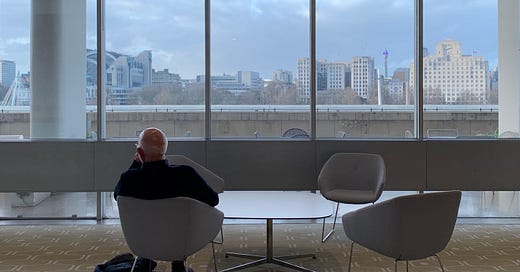

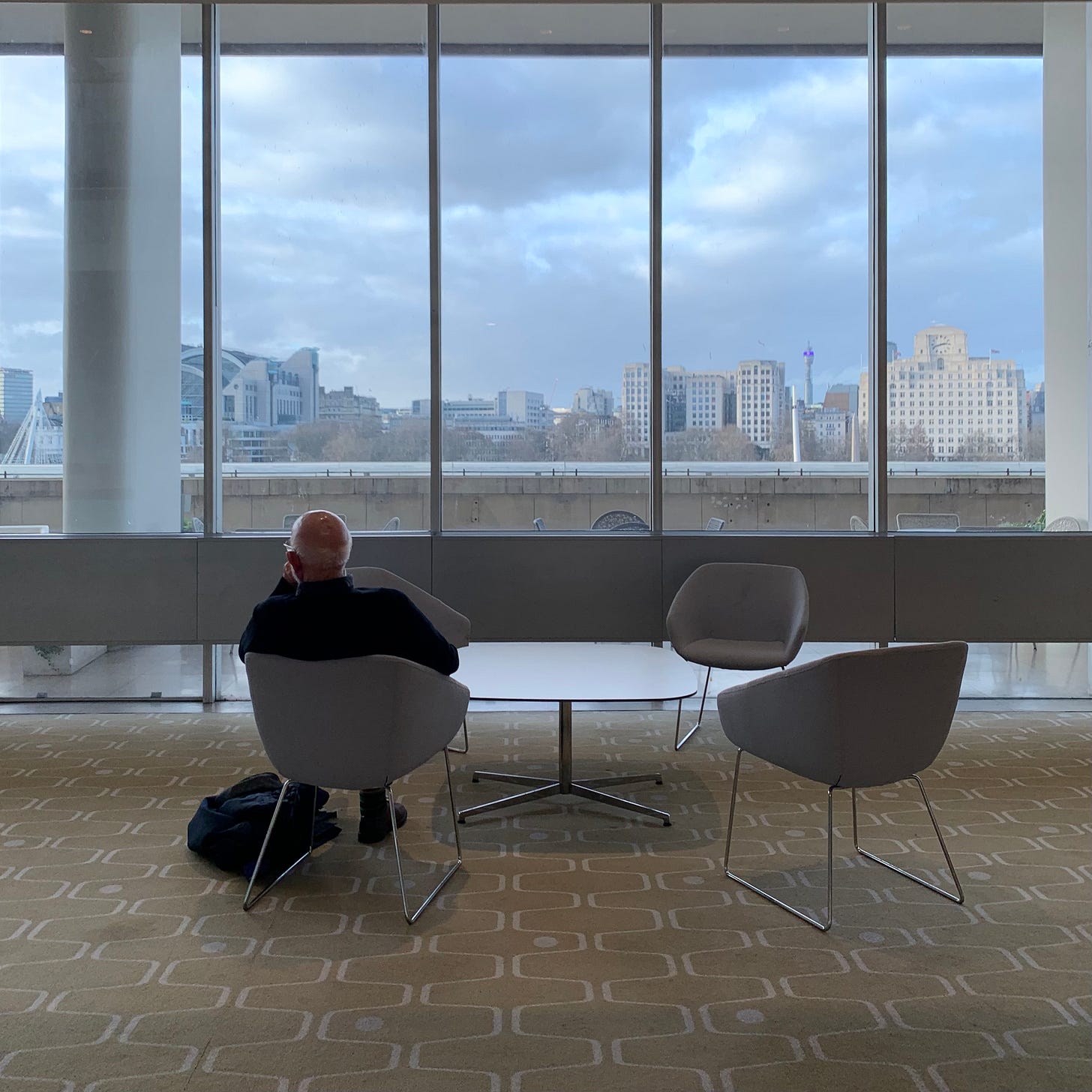
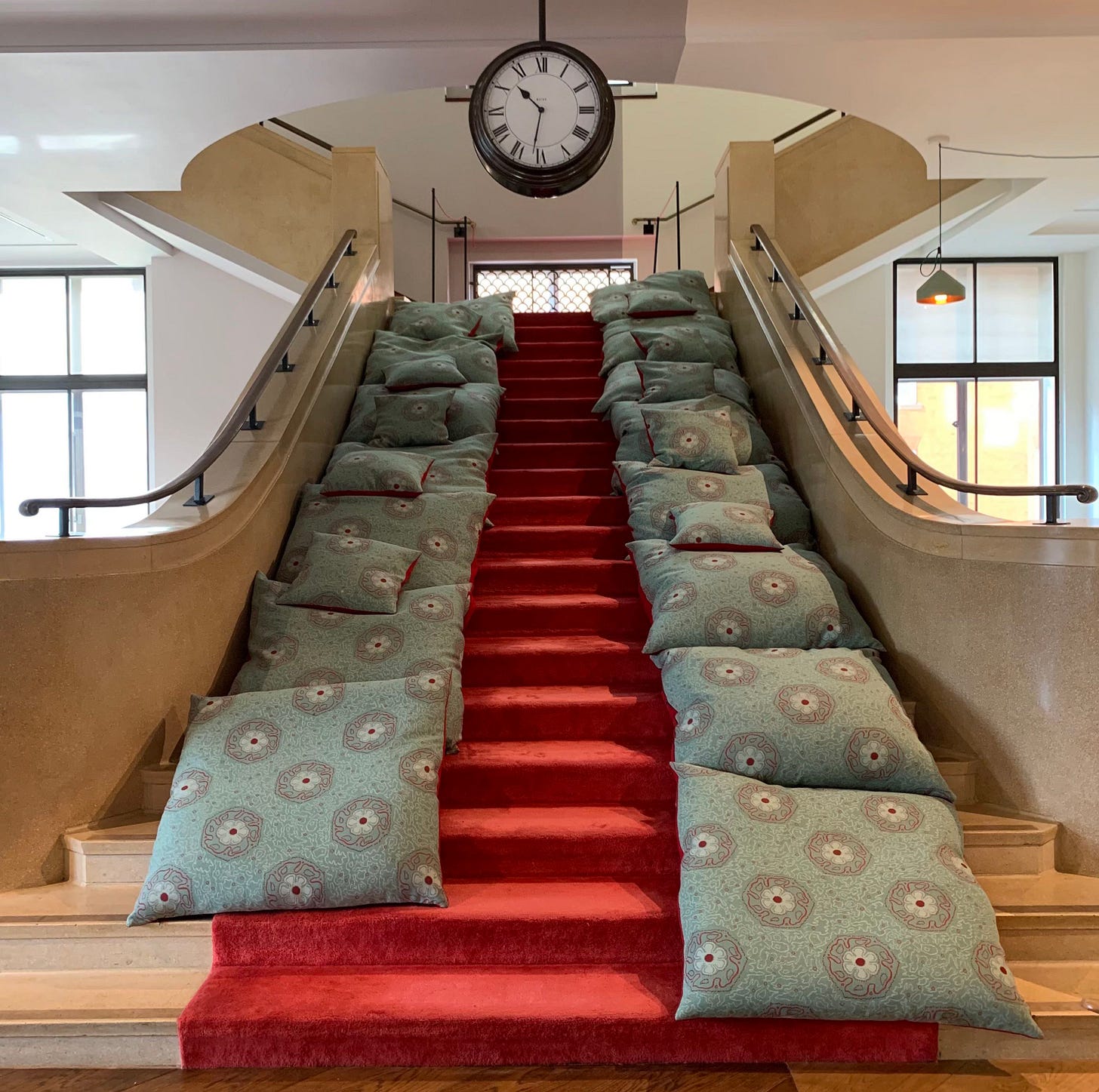
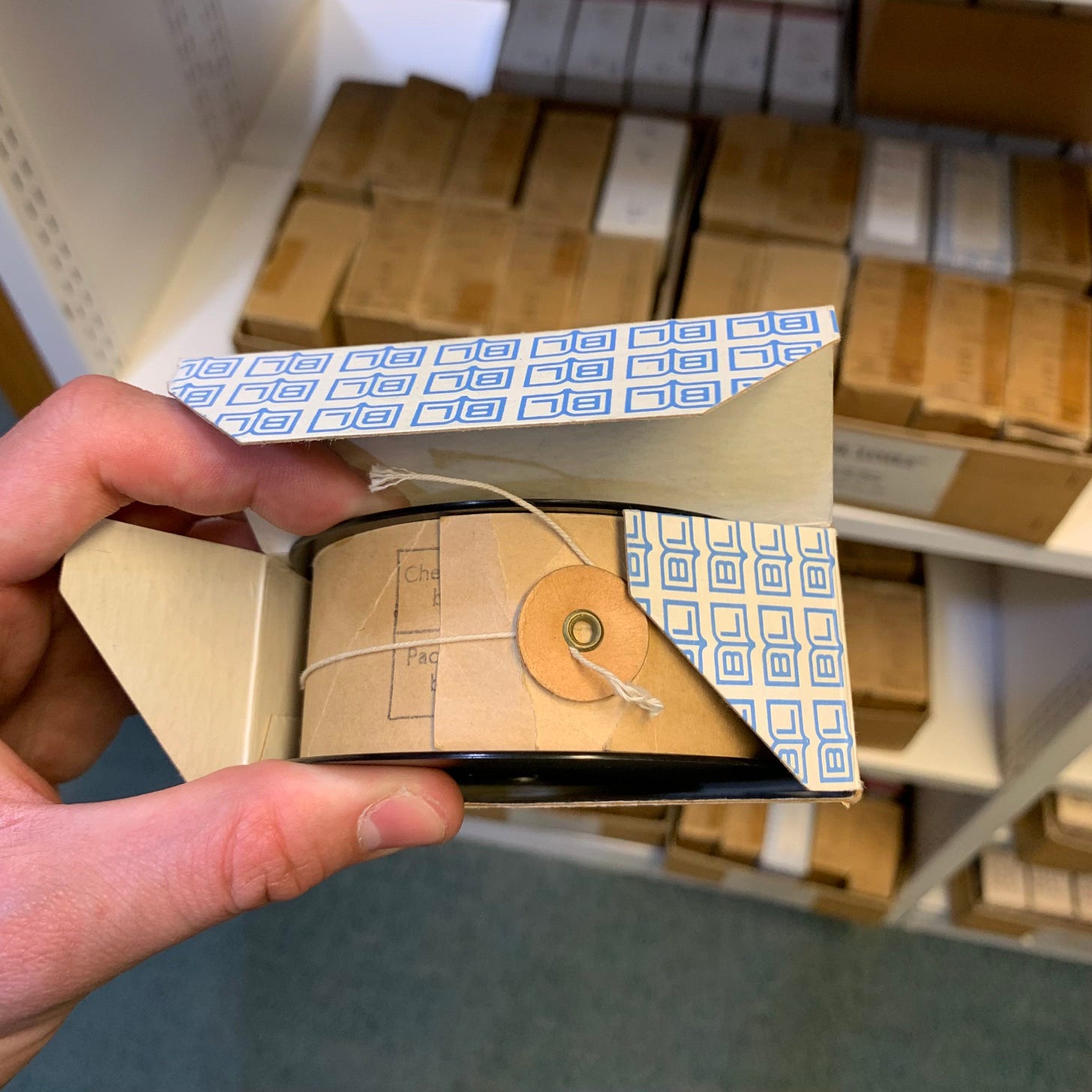
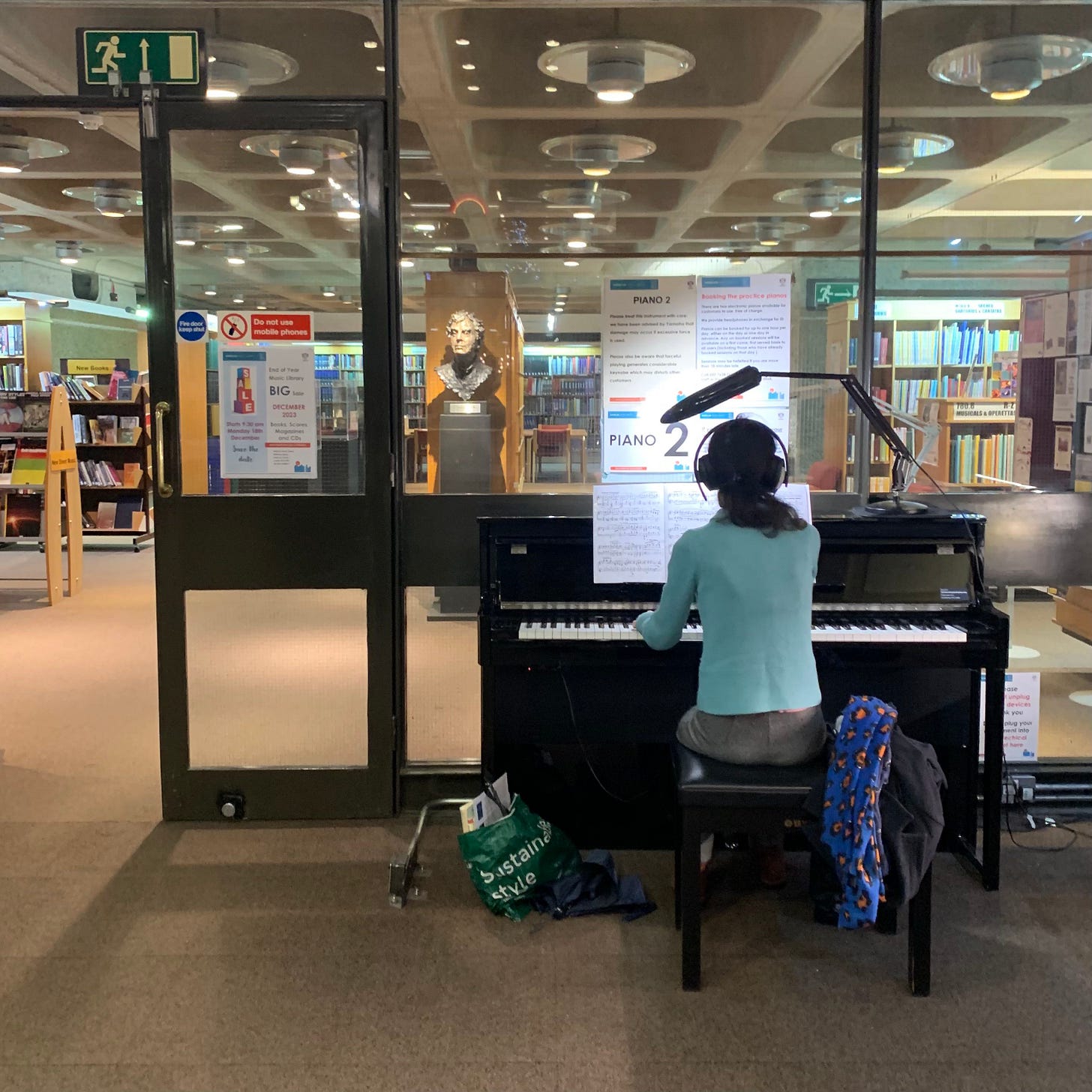
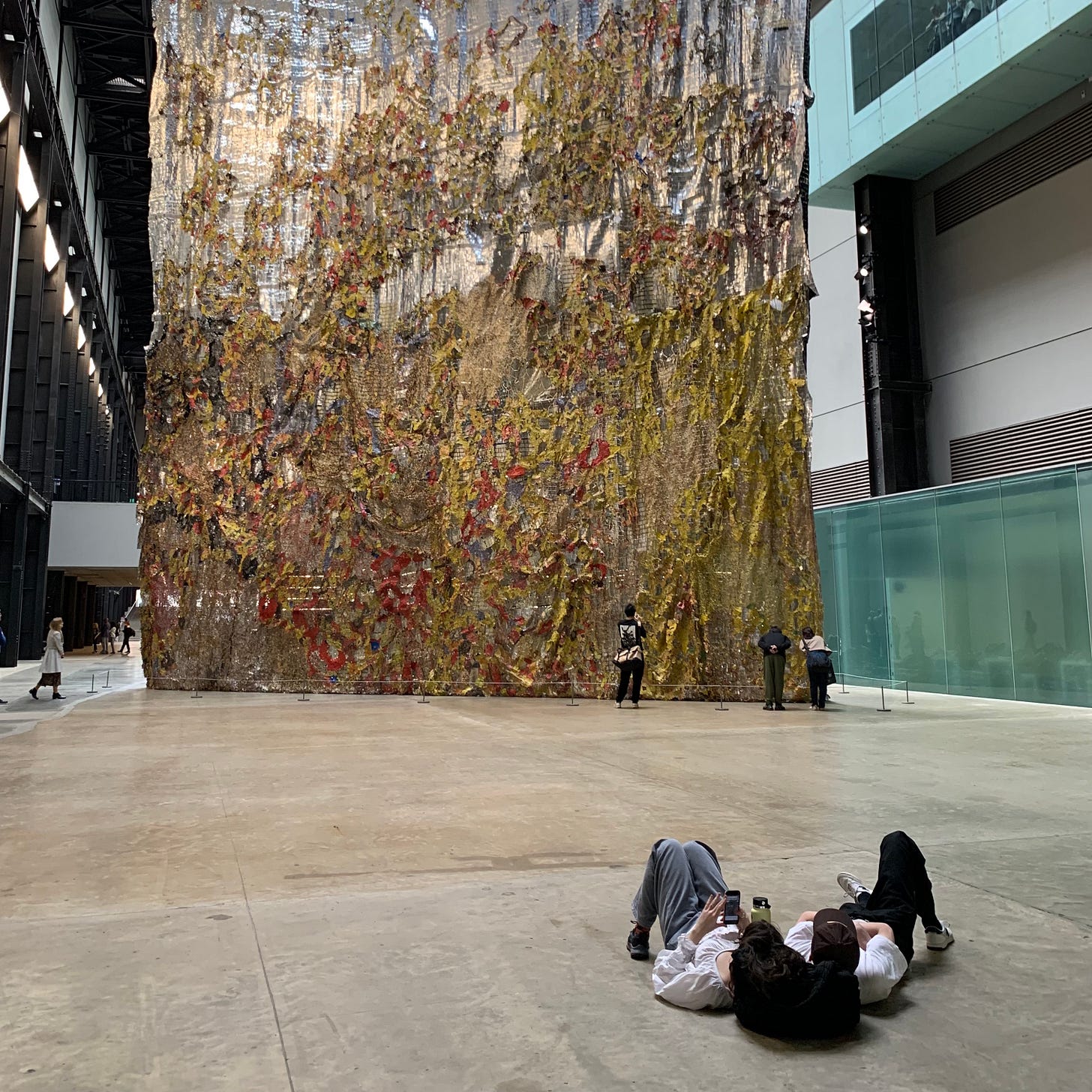
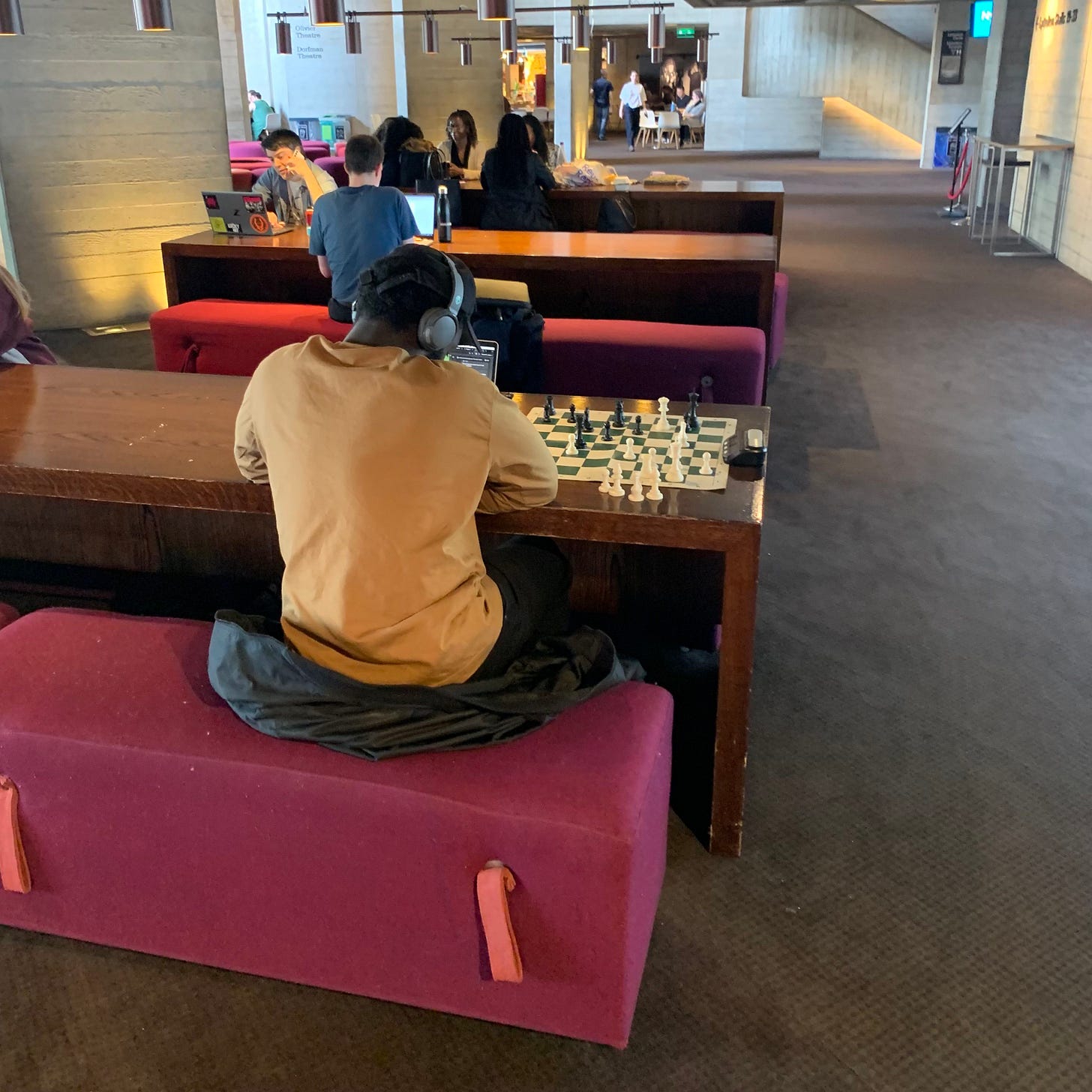

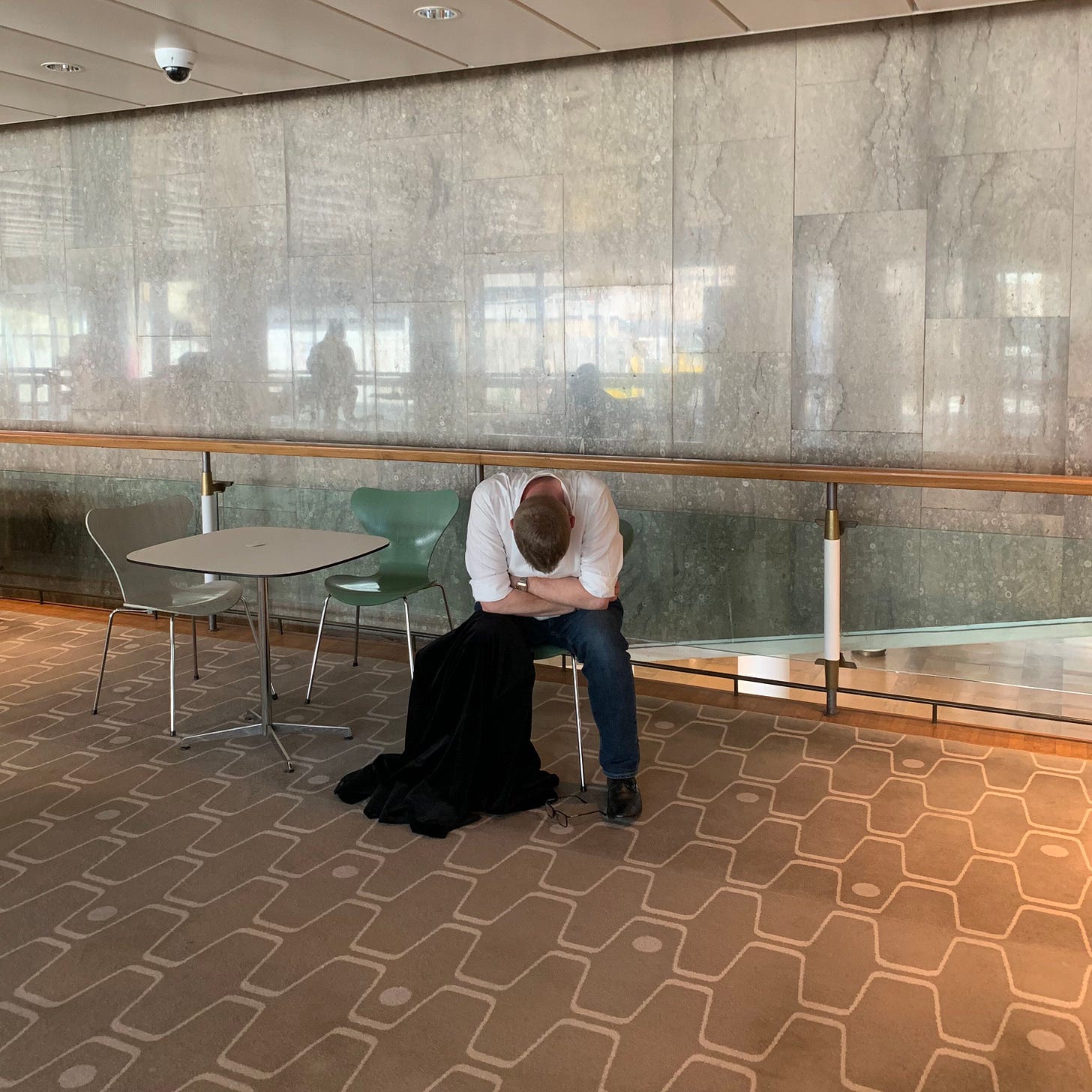
Love this! It’s sad to realise I don’t know of many more free places to just be. The Dalston Curve garden is one… it does have a cafe/bar but also plenty of people just eating packed lunches and meeting up, or on their own. During Covid they ran lots of events for older people. It’s open from 1pm. Near Dalston Junction.
I’ve been to a few but the list has only grown! Thank you for this, I can’t be bothered bringing lunch back to my desk either!